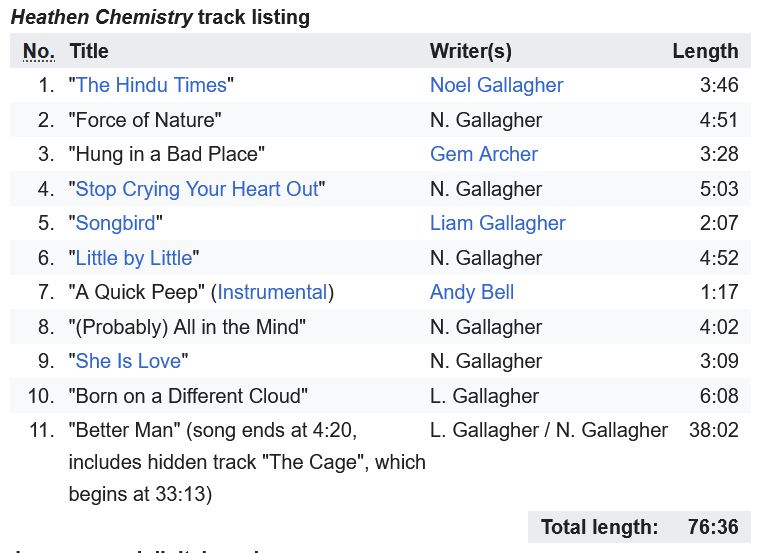
Oasis’s Heathen Chemistry showcases a blend of classic Britpop and alternative rock, reflecting their evolution with contributions from new members. You’ll find themes of introspection and resilience in tracks like “Stop Crying Your Heart Out” and “Songbird,” while songs like “The Hindu Times” embody a rebellious spirit. Musically, the album features layered production and lively instrumentation, enhancing its emotional impact. Critics recognized its balanced approach but noted a lack of groundbreaking energy compared to earlier works. Ultimately, Heathen Chemistry solidified Oasis’s legacy, intertwining past influences with future possibilities. There’s much more to uncover about its influence and legacy.
Context and Background
When you immerse yourself in the setting and background of Oasis’s Heathen Chemistry, you’ll find it marks a significant turning point for the band. Released on July 1, 2002, this album reflects a vital period of change. By introducing new members Gem Archer and Andy Bell, Oasis welcomed fresh viewpoints in songwriting, shifting away from Noel Gallagher’s previous dominance. This change breathed new life into their music, allowing for a richer, more diverse sound.
During the creation of Oasis’s Heathen Chemistry, Oasis faced the aftermath of the mixed receptions of their earlier records, Be Here Now and Standing on the Shoulder of Giants. They aimed to stabilize their sound and reclaim their place in the rock scene. The band wasn’t only recovering from critical backlash but also seeking to evolve creatively. Notably, Oasis had previously achieved eight UK number-one singles and albums, a testament to their significant impact on the music landscape.
This album serves as a bridge between their Britpop roots and a more collaborative future. It showcases a blend of classic influences while highlighting the band’s resilience.
As you investigate the tracks, you’ll notice how this evolution laid the foundation for later albums and solidified Oasis’s enduring legacy in rock music.
Themes and Lyrics of Oasis’s Heathen Chemistry
Numerous themes and lyrical motifs surface throughout Heathen Chemistry, reflecting Oasis’s growth and maturity as a band.
You’ll notice that introspection and vulnerability dominate tracks like “Stop Crying Your Heart Out” and “Born on a Different Cloud.” These songs encourage resilience and self-reflection, showcasing a more significant understanding of life’s struggles.

Optimism shines through in “Songbird,” where Liam Gallagher delivers heartfelt expressions of love and positivity, revealing a gentler side of the band.
Meanwhile, tracks like “The Hindu Times” and “Force of Nature” highlight Oasis’s rock and rebellion spirit, blending swagger with a refined sound that’s less aggressive than in their earlier works.
The title, Heathen Chemistry, hints at spiritual undertones, weaving in sacred and profane imagery.
You’ll find that the lyrics often investigate the tension between these elements, reflecting the band’s changing outlook.
In general, the themes in Oasis’s Heathen Chemistry connect with listeners, inviting them to contemplate their own experiences while enjoying the blend of introspection and anthemic rock that defines this album. Additionally, the album showcases the protection of intellectual property rights, emphasizing the importance of creativity and originality in music.
Musicality
Building on the themes of introspection and vulnerability, the musicality of Oasis’s Heathen Chemistry showcases a blend of classic Britpop and alternative rock influences. You’ll notice the album seamlessly merges electric and acoustic instrumentation, creating a vibrant soundscape that balances loud, guitar-driven tracks with softer, more contemplative moments. The influence of iconic bands like The Beatles and The Rolling Stones is palpable, augmenting the comprehensive sound.
As you explore the album, you’ll appreciate the layered production, which adds depth to the songs. The guitars often take center stage, presenting infectious riffs that invite you to sing along, while the rhythmic backbone keeps the energy flowing. The vocals, both Liam’s and Noel’s, carry a raw emotional weight that amplifies the lyrical themes of resilience and reflection.
Each track feels carefully crafted, reflecting a collaborative spirit among the band members. This fresh approach marks a departure from earlier albums dominated by Noel’s songwriting.
In Heathen Chemistry, you find a mature yet accessible musicality that connects with both long-time fans and newcomers alike, showcasing Oasis’s ability to evolve while staying true to their roots. The album also features contributions from the primary songwriter Noel Gallagher, highlighting the band’s dynamic songwriting evolution.
Notable Tracks
Each of these tracks not only emphasizes Oasis’s ability to evolve but also reflects the unique contributions of new members.
Together, they create a rich fabric of sound that defines Heathen Chemistry, demonstrating that the band remains an essential force in rock music, even as they venture into new territory.
Critical Reception
Critical reception of Oasis’s Heathen Chemistry was decidedly mixed, with some critics praising its return to form while others lamented the absence of creative energy that characterized earlier Oasis albums.
You’ll notice that many reviews highlighted the album’s blend of new influences and familiar sounds, appreciating the contributions from Gem Archer and Andy Bell. Tracks like “Stop Crying Your Heart Out” and “The Hindu Times” gained particular acclaim, showcasing the band’s ability to deliver anthemic melodies.
However, not all feedback was positive. Detractors pointed out that some songs felt formulaic, lacking the revolutionary spirit that initially set Oasis apart. Critics argued that while the album marked a necessary evolution, it didn’t quite push boundaries.
You’ll find that the general sentiment varied widely: some felt it was a solid continuation of the band’s legacy, while others viewed it as a missed opportunity for creativity.
In essence, the critical reception reflects a broader conversation about Oasis’s place in rock history. Even if the album didn’t reach the heights of its predecessors, it still holds value for many listeners who appreciate its introspective themes and collaborative efforts.
Commercial Performance
Success marked the commercial performance of Oasis’s Heathen Chemistry, as it debuted at number one on the UK Albums Chart. This strong opening reflects the band’s enduring popularity, even as they maneuvered a challenging period in their career. The album quickly gained traction, selling over 300,000 copies in its initial week alone, showcasing the loyal fanbase Oasis had cultivated over the years.

Singles from the album markedly contributed to its commercial success. “The Hindu Times” and “Stop Crying Your Heart Out” both charted well, with the former reaching number one on the UK Singles Chart. These tracks connected with fans and showcased a mix of the band’s classic rock sound and new influences. “Little by Little” also performed admirably, further solidifying the album’s presence in the charts.
Worldwide, Heathen Chemistry achieved respectable sales figures, demonstrating that Oasis still commanded a strong market presence. While critics may have had mixed opinions, the commercial performance clearly indicated that the band was capable of producing hits that appealed to a wide audience.
In general, Heathen Chemistry reaffirmed Oasis’s status as a notable player in the rock music arena.
Legacy of the Album
The legacy of Oasis’s Heathen Chemistry reveals how Oasis managed to steer through a significant moment in their career, solidifying their status as rock icons despite the mixed critical reception. This album marked a notable turning point, showcasing a more collaborative songwriting approach with contributions from Gem Archer and Andy Bell. By allowing other voices to shape their music, Oasis demonstrated their willingness to evolve while maintaining their core sound.
Tracks like “Stop Crying Your Heart Out” and “The Hindu Times” became anthems, resonating deeply with fans and ensuring their place in the band’s live performances. The album, while not universally acclaimed, served as a bridge between their earlier Britpop triumphs and a more modern rock sound, displaying their ability to adapt and remain relevant.
Ultimately, Heathen Chemistry left a lasting impact on Oasis’s discography. It paved the way for future projects, such as Don’t Believe the Truth, and highlighted their resilience in the face of challenges.
You can see how the themes of introspection and collaboration from this album continue to influence their music, cementing its importance in the band’s legacy.
Key Takeaways
Exploring Heathen Chemistry reveals how Oasis steered a vital moment in their career, blending introspection with a collaborative spirit.
This album marks a significant shift, showcasing a mix of their classic Britpop roots while allowing other band members, like Gem Archer and Andy Bell, to contribute to the songwriting. You’ll notice themes of resilience and vulnerability in tracks such as “Stop Crying Your Heart Out” and “Born on a Different Cloud,” which reflect a more mature outlook.
While the album didn’t achieve the iconic status of their earlier works, it still features standout tracks like “The Hindu Times” and “Songbird,” illustrating the band’s ability to evolve. Critics had mixed feelings, praising the collaborative approach but sometimes noting a lack of innovative energy.
Despite this, it debuted at number one on the UK Albums Chart, signifying its commercial success. Additionally, the album’s legacy continues to resonate, as demonstrated by the upcoming Oasis Live 25 tour in 2025, which highlights their enduring popularity.
Ultimately, Heathen Chemistry serves as an affirmation of Oasis’s creative adaptability and resilience, bridging their past with a more balanced future.
This album solidified their legacy and showcased their enduring relevance in the rock music arena.



